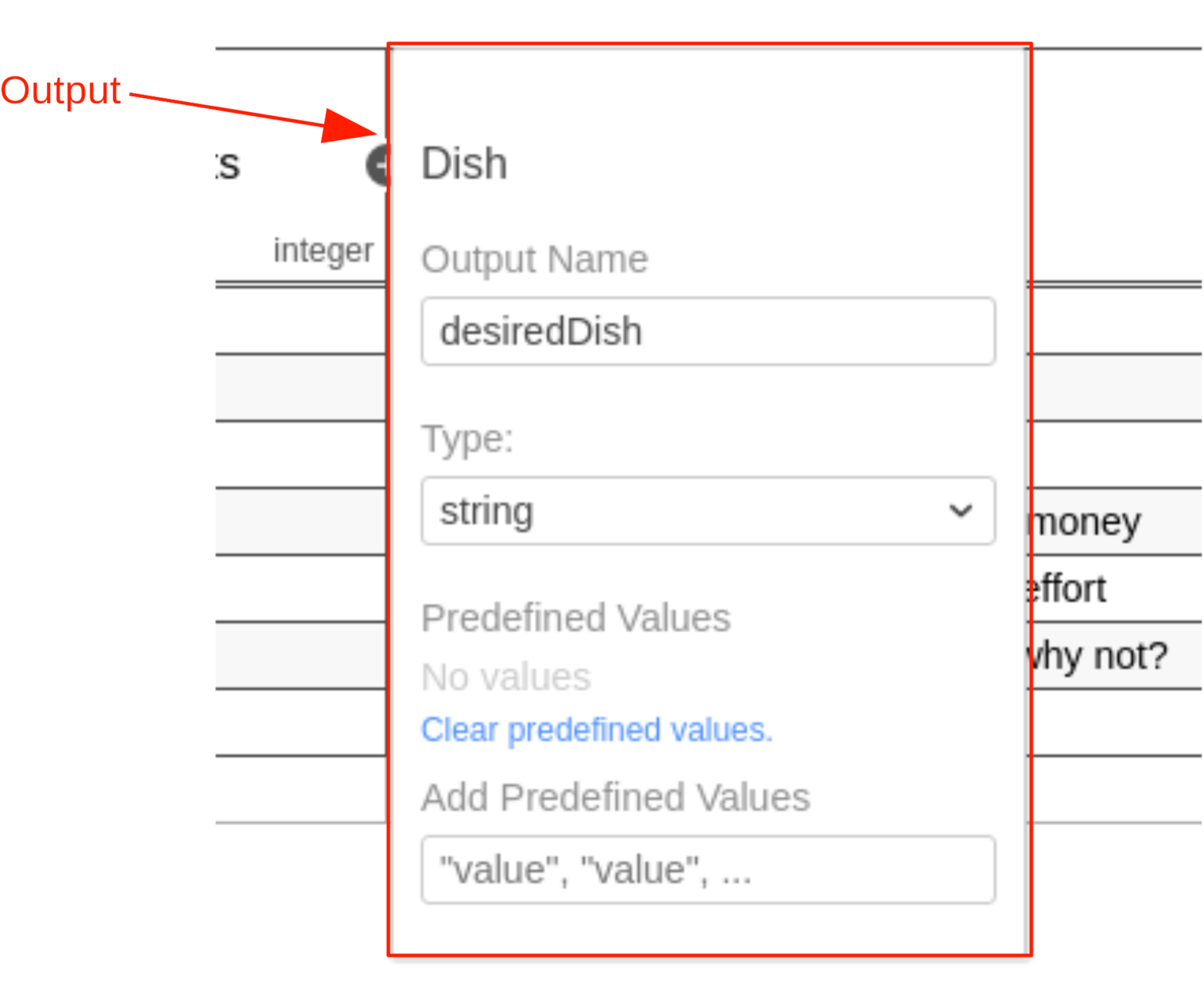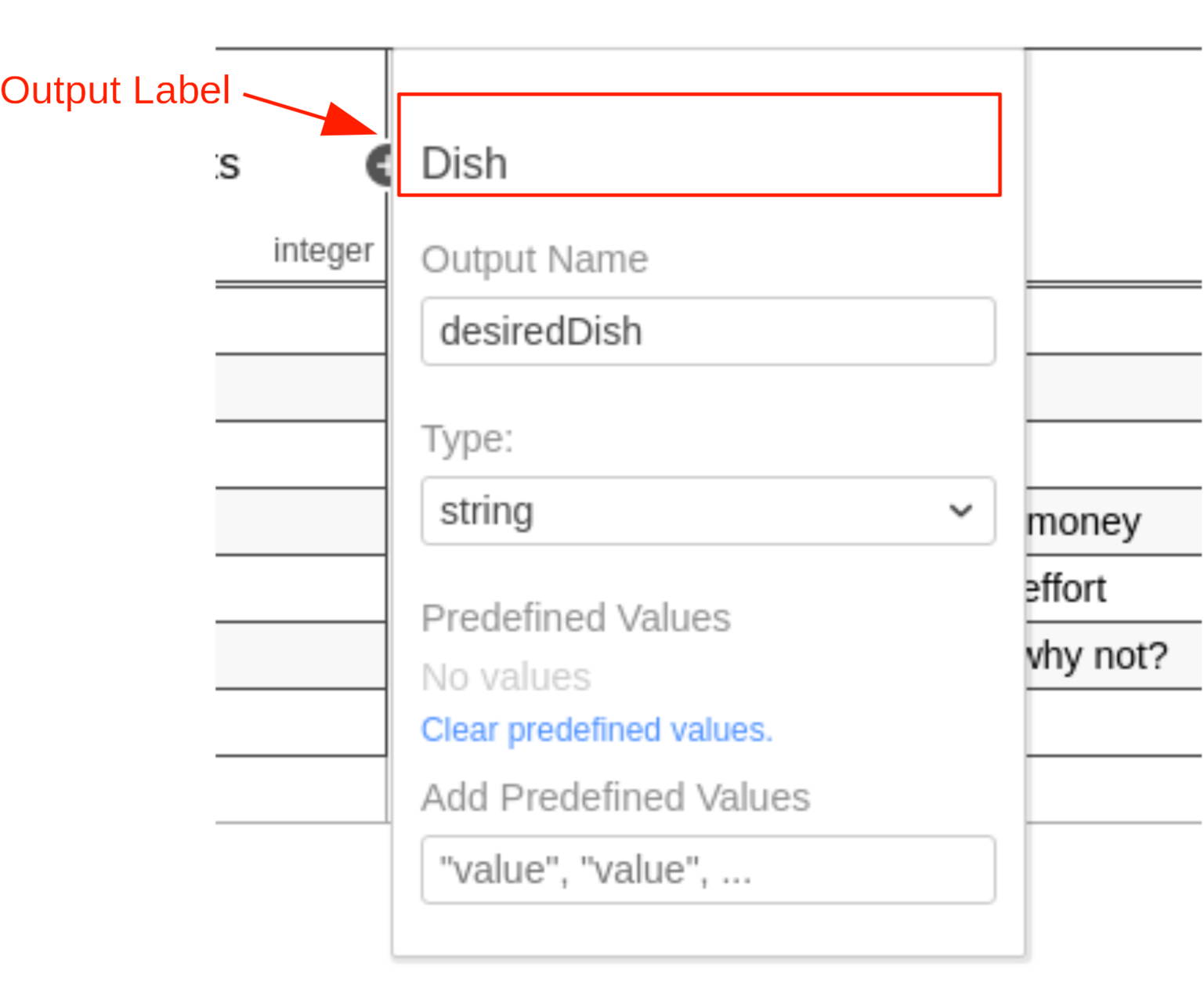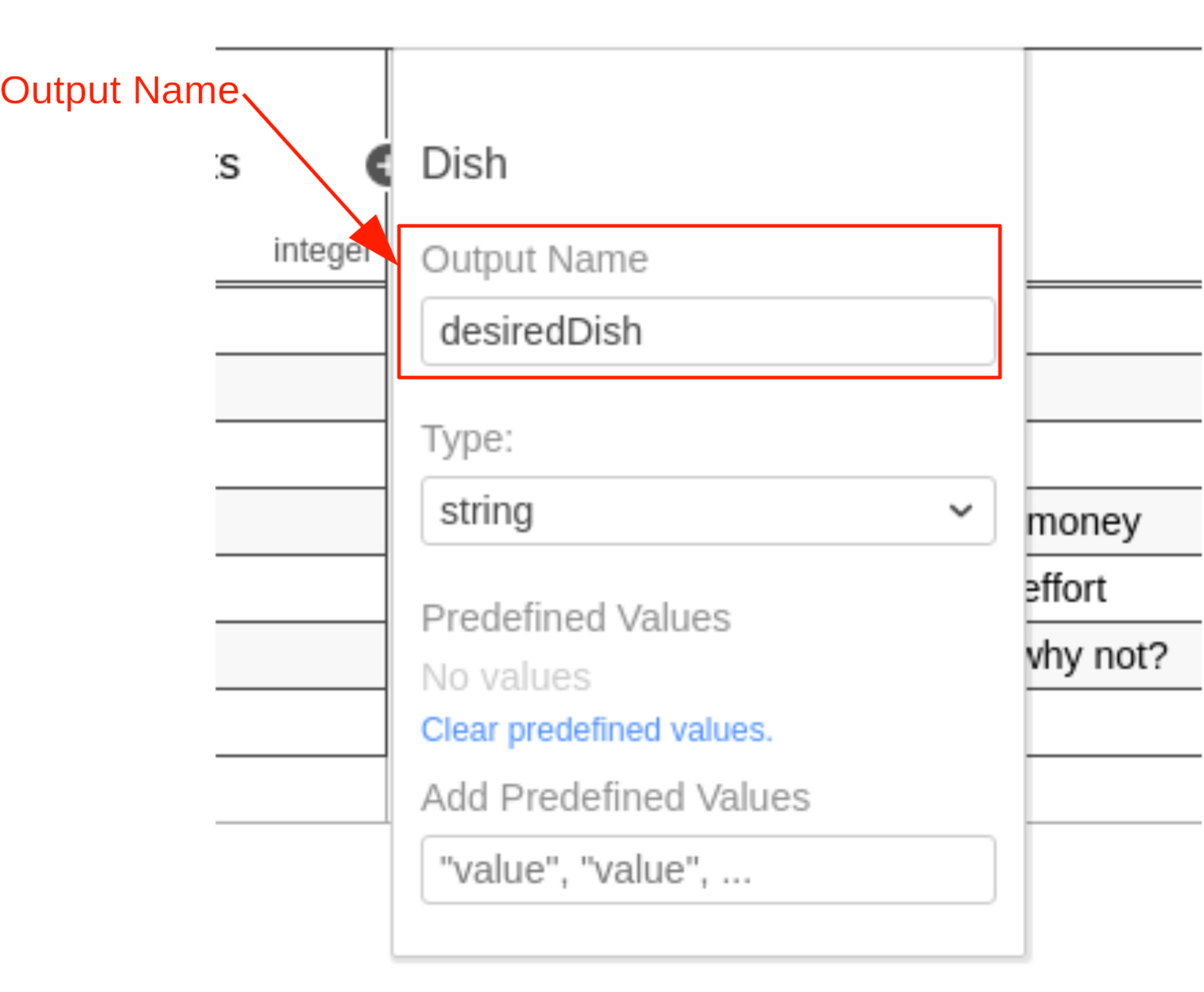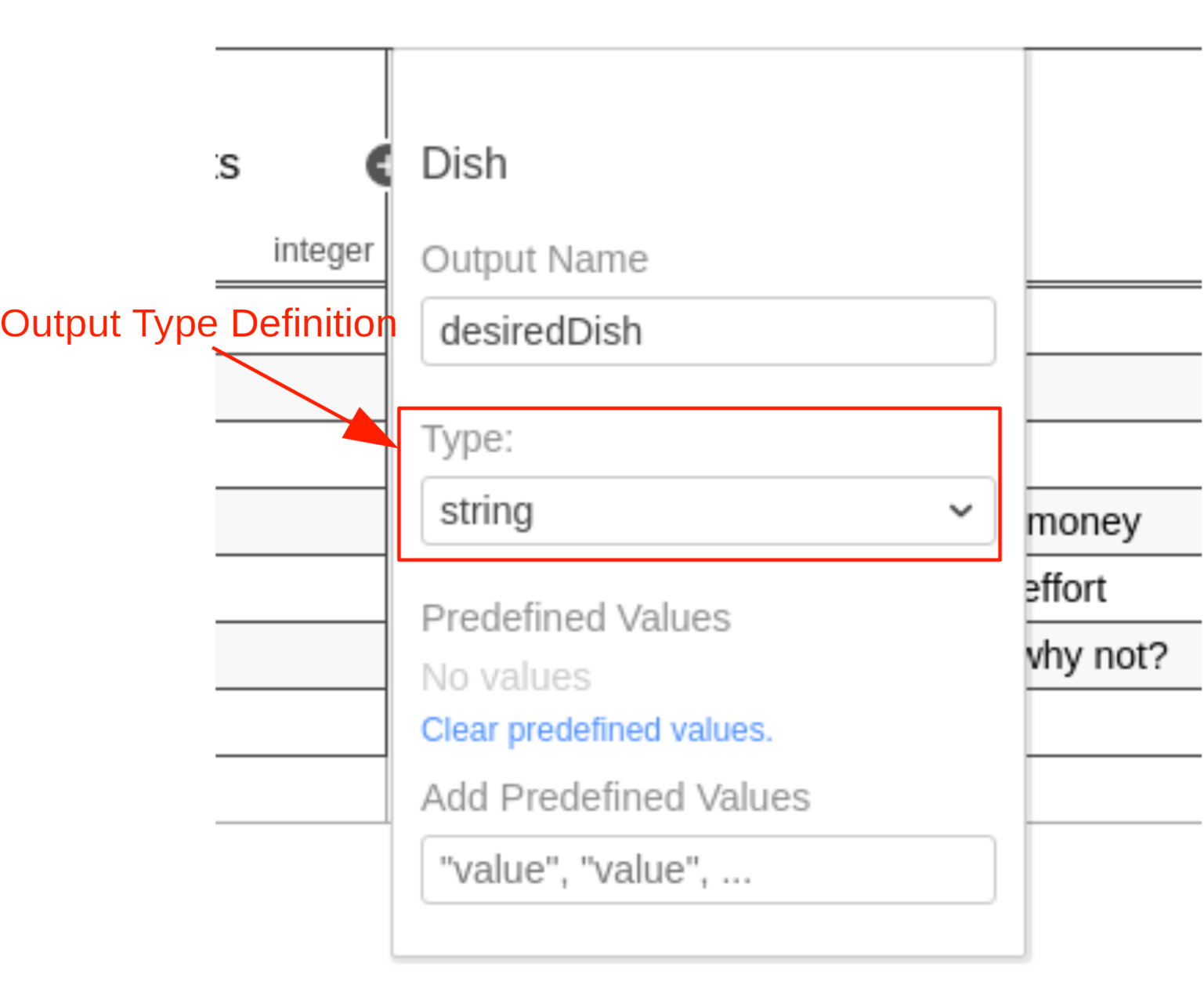Output

A decision table can have one or more outputs, also called output clauses. An output clause defines the id, label, name and type of a decision table output.
An output clause is represented by an output element inside a decisionTable
XML element.
<definitions xmlns="https://www.omg.org/spec/DMN/20191111/MODEL/" id="definitions" name="definitions"
namespace="http://camunda.org/schema/1.0/dmn">
<decision id="dish" name="Dish">
<decisionTable id="decisionTable">
<!-- ... -->
<output id="output1" label="Dish" name="desiredDish" typeRef="string"/>
<!-- ... -->
</decisionTable>
</decision>
</definitions>
Output id
The output id is a unique identifier of the decision table output. It is used by Camunda to reference the
output clause. Therefore, it is required. It is set as the id attribute of the output XML element.
<output id="output1" label="Dish" name="desiredDish" typeRef="string"/>
Output label

An output label is a short description of the output. It is set on the output
XML element in the label attribute. Note that the label is not required but recommended, since it helps to understand
the decision.
<output id="output1" label="Dish" name="desiredDish" typeRef="string"/>
Output name

The name of the output is used to reference the value of the output.
It is specified by the name attribute on the output XML element.
If the decision table has more than one output, then all outputs must have a unique name.
The output name may not contain any special characters or symbols (e.g. whitespace, dashes, etc.).
The output name can be any alphanumeric string including the _ symbol. For a combination of words, it's recommended to
use the camelCase or the snake_case format. The kebab-case format is not allowed because it contains the
operator -.
If the output name contain a special character or symbol then the output can't be accessed in a dependent decision nor in a calling BPMN process.
If the decision table has only one output then it is recommended that the decision id is used as the output name.
The decision result can be accessed in a dependent decision by its
decision id. Only if the decision table has more than one output then the output values are grouped under the decision
id and can be accessed by their output names ( e.g. decisionId.outputName).
<output id="output1" label="Dish" name="desiredDish" typeRef="string"/>
Output type definition

The type of the output clause can be specified by the typeRef attribute on the
output XML element.
After an output entry is evaluated, it checks if the result converts to the specified type. The type should be one of the supported data types.
<output id="output1" label="Dish" name="desiredDish" typeRef="string"/>
Note that the type is not required but recommended, since it provides a type safety of the output values.